Potřebujeme váš souhlas k využití jednotlivých dat, aby se vám mimo jiné mohly ukazovat informace týkající se vašich zájmů. Souhlas udělíte kliknutím na tlačítko „OK“.
ASTM C1074-11
Standard Practice for Estimating Concrete Strength by the Maturity Method
Automaticky přeložený název:
Standardní praxe pro odhad pevnosti betonu podle metody splatnosti
NORMA vydána dne 15.6.2011
Informace o normě:
Označení normy: ASTM C1074-11
Poznámka: NEPLATNÁ
Datum vydání normy: 15.6.2011
Kód zboží: NS-9309
Počet stran: 10
Přibližná hmotnost: 30 g (0.07 liber)
Země: Americká technická norma
Kategorie: Technické normy ASTM
Kategorie - podobné normy:
Anotace textu normy ASTM C1074-11 :
Keywords:
in-place strength, maturity method, nondestructive testing, temperature, Cold-weather concrete, Concrete, Concrete strength, Field testing--concrete/aggregates, Flexural testing--concrete, Formwork removal, In-place strength, Maturity method, Nondestructive evaluation (NDE)--concrete/masonry, Post-tensioning of tendons, Removal of forms, Reshoring, Sensors, Strength--cement/concrete mixtures/applications, Temperature tests, Temperature-time factor
Doplňující informace
| Significance and Use | ||||||||||||||||||||||||
|
This practice can be used to estimate the in-place strength of concrete to allow the start of critical construction activities such as: (1) removal of formwork and reshoring; (2) post-tensioning of tendons; (3) termination of cold weather protection; and (4) opening of roadways to traffic. This practice can be used to estimate strength of laboratory specimens cured under non-standard temperature conditions. The major limitations of the maturity method are: (1) the concrete must be maintained in a condition that permits cement hydration; (2) the method does not take into account the effects of early-age concrete temperature on the long-term strength; and (3) the method needs to be supplemented by other indications of the potential strength of the concrete mixture. The accuracy of the estimated strength depends, in part, on using the appropriate maturity function for the particular concrete mixture. Annex A1 provides a procedure for determining experimentally the best parameters (datum temperature or value of Q) for the maturity functions described in Section 6. |
||||||||||||||||||||||||
| 1. Scope | ||||||||||||||||||||||||
|
1.1 This practice provides a procedure for estimating concrete strength by means of the maturity method. The maturity index is expressed either in terms of the temperature-time factor or in terms of the equivalent age at a specified temperature. 1.2 This practice requires establishing the strength-maturity relationship of the concrete mixture in the laboratory and recording the temperature history of the concrete for which strength is to be estimated. 1.3 The values stated in SI units are to be regarded as standard. No other units of measurement are included in this standard. 1.4 This standard does not purport to address all of the safety concerns, if any, associated with its use. It is the responsibility of the user of this standard to establish appropriate safety and health practices and determine the applicability of regulatory limitations prior to use. (WarningFresh hydraulic cementitious mixtures are caustic and may cause chemical burns to skin and tissue upon prolonged exposure. ) |
||||||||||||||||||||||||
| 2. Referenced Documents | ||||||||||||||||||||||||
|
Podobné normy:
Historická
15.12.2013
Historická
1.4.2013
Historická
15.6.2010
Historická
15.6.2010
Historická
15.6.2010
Historická
1.7.2014
Odebírejte informace o nově vydaných normách ZDARMA:
Chcete pravidelně odebírat informace o nově vycházejících normách z celého světa a to zcela zdarma?
Přihlašte se k odběru. Vše je velice jednoduché a absolutně ZDARMA.
Na výběr máte vydavatele z celého světa.


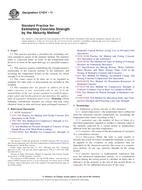
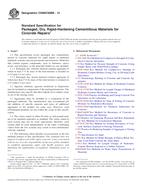 ASTM C928/C928M-13..
ASTM C928/C928M-13.. ASTM C935-13
ASTM C935-13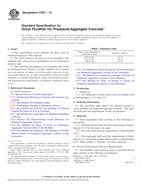 ASTM C937-10
ASTM C937-10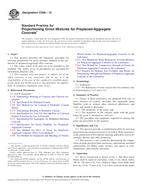 ASTM C938-10
ASTM C938-10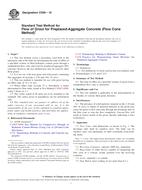 ASTM C939-10
ASTM C939-10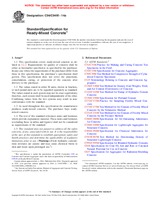 ASTM C94/C94M-14a..
ASTM C94/C94M-14a..
 Cookies
Cookies
